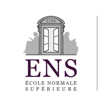Abstract
The relationship between glyptics and the circulation of images can be analysed from different perspectives, as seen in the case study of the image of Capricorn. The goat-fish monster entered the European collective imagination during Antiquity, when its image was spread on gems and coins. The popularity of this theme in the Augustan Age is unquestionable but, over time, the political meanings associated with Capricorn seemed to have faded, while others appeared. These meanings were fully recovered by 17th century scholars through the analysis of famous cameos and lesser-known gems. However, the protective and magical value of gems with Capricorn has always been and still remains remarkable. Further insights and comparisons are provided by some unpublished Capricorn intaglios and glass gems housed in the collections of the Museo Archeologico al Teatro Romano (MATR) in Verona.
Recommended Citation
Magni, Alessandra; Umberto Verdura; and Gabriella Tassinari. "Sub signo Capricorni. The Image of Capricorn in Glyptics: Literary Sources, Gemstones, Impressions, Drawings." Artl@s Bulletin 10, no. 1 (2021): Article 2.






